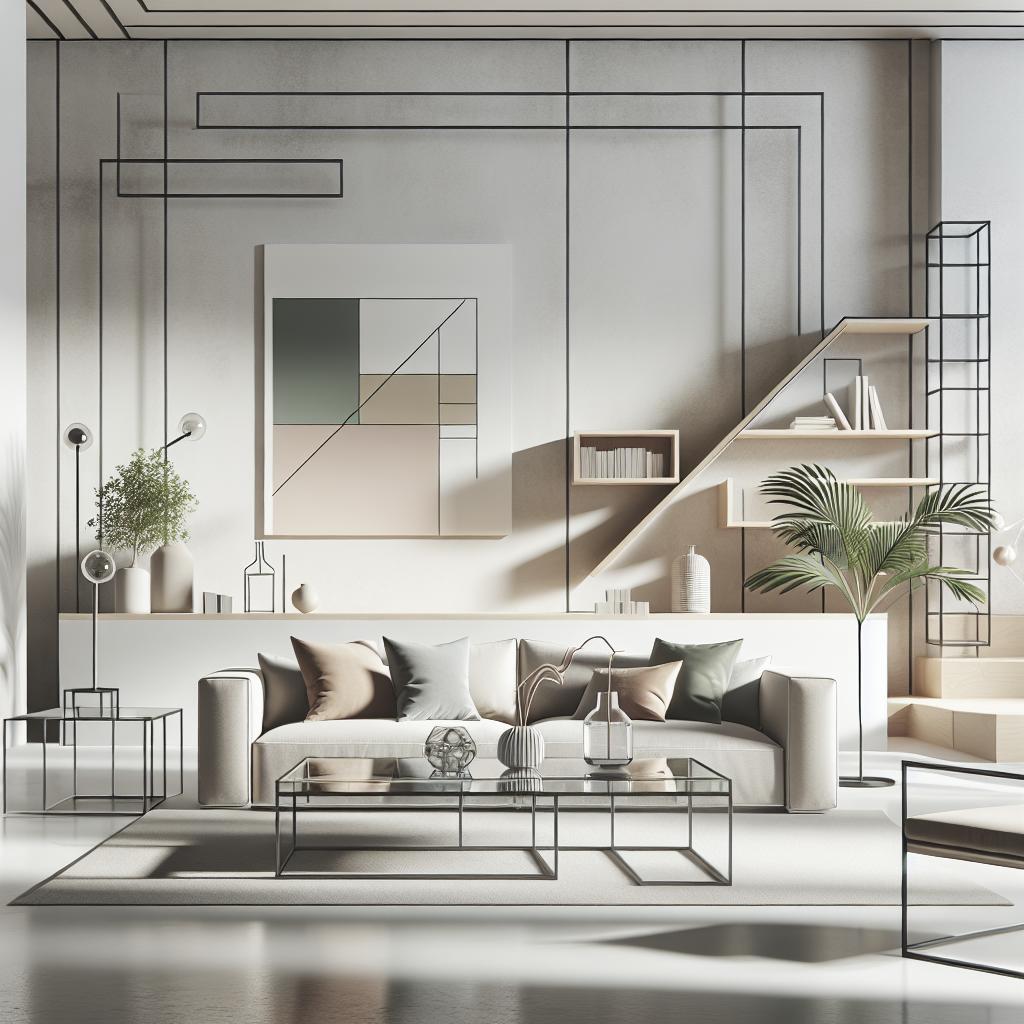Architecture has always been a cornerstone of human development, shaping not just our physical surroundings but also influencing the social, cultural, and economic dynamics of cityscapes. From the towering skyscrapers of modern metropolises to the quaint charm of historic towns, the architectural fabric of a city tells a story of its past, present, and future. This blog post delves into the profound impact of architecture on cityscapes, exploring historical influences, the spectrum of architectural practices, and the hypothetical scenario of a world without these manmade structures. We’ll also look into the forward-thinking visions of architecture that challenge conventional blueprints and offer insights on how architecture has personally influenced my worldview. Through these perspectives, we aim to understand how architecture not only builds cities but also shapes human experiences and aspirations. ### Past Echoes, Future Visions The architectural landscape of any city is a tapestry woven with threads of history, culture, and futurism. Historical structures function as silent narrators, recounting tales of bygone eras and offering a glimpse into a city’s evolution. Cities like Rome and Athens are living museums, where ancient ruins coexist with modern infrastructure, painting a vivid timeline of human achievement and resilience. Each building serves as a monument that speaks to the ideals and technological capabilities of its time, offering a continuous dialogue through centuries. As cities evolve, their architecture often reflects aspirations and visions for the future. The integration of modern technology and sustainable practices in today’s architectural endeavors outlines a city’s commitment to progress and environmental stewardship. For instance, the rise of eco-friendly buildings and smart infrastructure in cities like Copenhagen and Singapore demonstrates how contemporary architecture can lead to innovative urban ecosystems. The trajectory from past to future in architectural growth reflects societal transformations and ambitions. Moreover, skyscrapers and innovation hubs in sprawling urban centers symbolize economic vitality and serve as beacons of opportunity. These structures not only define skylines but also influence the pace and level of urban activity, initiating a ripple effect on social and economic dynamics. Thus, architecture continues to be both a mirror and a map, echoing historical legacies while paving pathways for future endeavors. ### Draft, Drift, and Everything in Between Architecture is a creative discipline that oscillates between definitive blueprints and organic drift—a spectrum where structured planning meets the flux of real-world execution. This duality manifests in different architectural styles and approaches. On one hand, we have meticulous drafts—urban formats like grid systems in New York City—that showcase order and premeditated design. These structured frameworks facilitate navigation and urban planning, ultimately enhancing the functionality of cityscapes. On the other side of the spectrum, architecture encompasses a certain drift—an organic evolution that accommodates the spontaneous flow of cultural, social, and economic variables. The winding alleys of cities like Venice or the haphazard street layouts of historic parts of London are examples of architecture embracing fluidity and adapting to existing human activity. Such architectural gems often captivate by offering unique and immersive environments that encourage exploration and discovery. This interplay between draft and drift speaks to the dynamic nature of urban development. Architects and planners are increasingly recognizing the importance of balancing these forces, crafting designs that can accommodate growth while retaining cultural identity and fostering human interaction. As urban centers continue to expand and diversify, the dialogue between structured planning and organic development remains crucial to smart, sustainable urban growth. ### Understanding Human Existence Without Architecture Envision a cityscape devoid of architecture, and what emerges is a landscape without defined form or function—a blank slate. Without architecture, cities would lack the organized infrastructure necessary for daily life to flourish, resulting in a chaotic coexistence of human and natural elements. This thought experiment allows us to appreciate the structuring role architecture plays in framing human existence and the intricate tapestry of urban life. Humans intuitively carve out spaces for shelter, laws, commerce, and culture. Architecture transforms these basic human needs into beautifully complex systems of interaction, paving the way for societal development. The significance of architecture is further underscored by its role in cultural expression. Historical and modern structures alike are testaments to the values and aspirations of civilizations, serving as cultural signifiers that reinforce community identity and shared heritage. Without architecture, cities would miss the defining silhouettes and iconic landmarks that not only guide residents and visitors but also form the backdrop of human interactions. The absence of such monumental creations would ultimately hinder the potential for cities to function as cohesive social and economic cores, underlining the necessity of architectural development. ### Human Existence Without Architecture: An Alternate Reality Exploring a world without architectural feats allows us to ponder alternate realities where societal development followed different paths. In this hypothetical scenario, human settlements might resemble nomadic encampments, with transient structures made from natural, perishable materials. While potentially beneficial for the environment, such an existence could limit the longevity and durability of societal progress, making long-term planning and development challenging. Human expression and identity have historically been inextricably linked to architectural achievements. From the pyramids of Egypt to the castles of Europe, structures have signified status, power, and innovation. In their absence, communities might prioritize different forms of identity markers—perhaps art, clothing, or oral traditions—as means of cultural expression. Yet, the lack of tangible, lasting landmarks could alter the narrative continuity through generations. This alternate reality prompts reflections on architecture’s influence not only on physical environments but also on human psychology and culture. Architecture, by providing shelter and instilling a sense of place, supports organized societal growth and shared cultural aspirations. The absence of enduring architecture could lead to a fundamentally different human experience, emphasizing the interwoven nature of architecture and civilization. ### Reimagine Tomorrow: Architecture Beyond the Blueprint The future of architecture lies in challenging conventional blueprints and embracing innovation. As urbanization accelerates, architecture must transcend traditional boundaries, adopting futuristic technologies and sustainable practices to conceive cities that cater to evolving human needs without compromising environmental integrity. Concepts like bioarchitecture, incorporating living, breathing systems into buildings, redefine the relationship between structures and nature. Moreover, architecture is increasingly moving towards participatory design, involving communities in the planning process to create spaces that reflect diverse needs and encourage inclusivity. This democratization of design fosters a more culturally responsive built environment, ensuring that architecture serves as a catalyst for social coherence and community resilience. Looking forward, architecture holds the potential to redefine how we inhabit the planet. Smart cities, harnessing the power of IoT and AI, are changing the way we interact with urban spaces, optimizing everything from energy efficiency to mass transit systems. These innovations invite reassessment of what constitutes architectural success, urging a departure from mere aesthetic valuation to focus on adaptability, sustainability, and human-centric design. ### From Self to Structures: How Architecture Swapped My Perspective Reflecting on my personal journey, architecture has profoundly influenced my understanding of the world and my role within it. Initially drawn to architectural marvels for their aesthetic appeal, I soon recognized the deeper interplay of form, function, and purpose that extends beyond visual admiration. This realization prompted a fundamental re-evaluation of my interactions with the built environment, focusing not solely on aesthetics but also on functionality and impact. Architecture encouraged an awareness of space and its potential to shape experiences, guiding my appreciation towards the subtleties of design—how a building’s layout can influence behavior, foster interaction, or inspire contemplation. This perspective shift influenced my writing and research approach, encouraging a synthesis of form and function to craft compelling and contextually aware narratives. Ultimately, architecture fostered a deeper understanding of urban dynamics and the imperceptible ways structures influence culture, society, and individual identity. Recognizing architecture as a multidimensional phenomenon transformed my perspective, encouraging a holistic consideration of how spaces shape, and are shaped by, human experiences. ### Final thoughts
| Section | Summary |
|---|---|
| Past Echoes, Future Visions | Explores the historical and futuristic aspects of architecture, highlighting its role in urban evolution and societal aspirations. |
| Draft, Drift, and Everything in Between | Discusses the balance between structured planning and organic growth in architecture, emphasizing its dynamic nature. |
| Understanding Human Existence Without Architecture | Considers the chaos and lack of identity in a cityscape without architecture, underscoring its essential role in urban life. |
| Human Existence Without Architecture: An Alternate Reality | Imagines a world without architectural achievements, exploring alternate forms of cultural expression and societal development. |
| Reimagine Tomorrow: Architecture Beyond the Blueprint | Evaluates innovative and sustainable architectural practices that redefine the future of urban living. |
| From Self to Structures: How Architecture Swapped My Perspective | Personal reflection on how architecture influenced an understanding of space, function, and cultural impact. |


